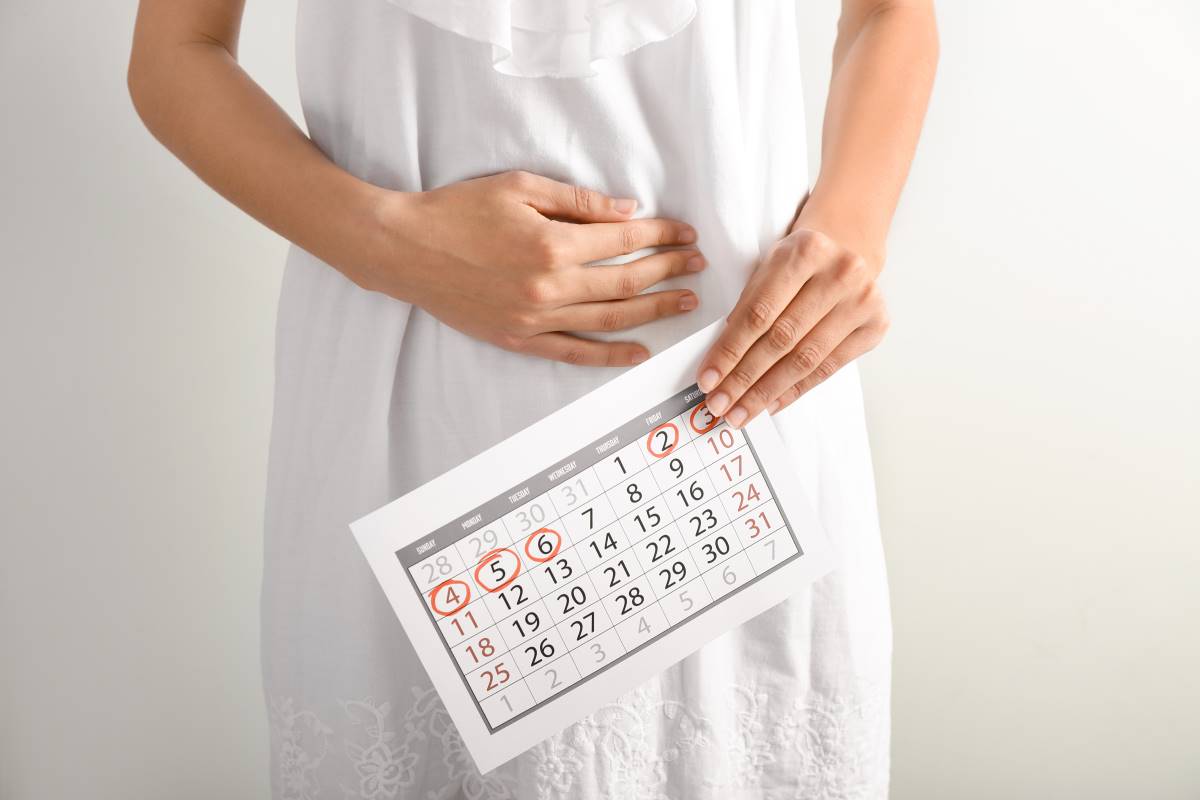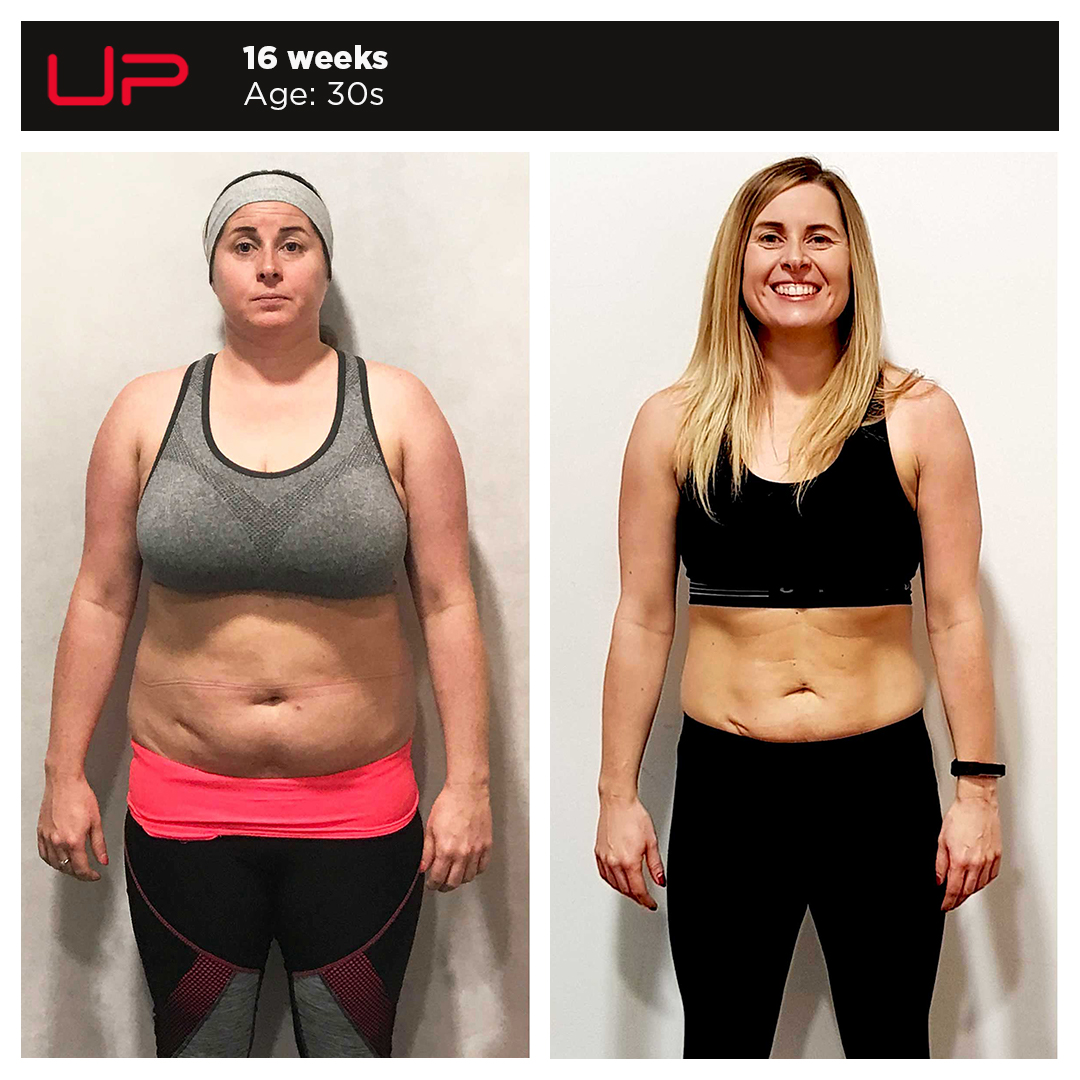The menstrual cycle refers to the series of hormone production and physiological changes that women experience in preparation for a possible pregnancy.
These fluctuations also trigger several other physiological effects, affecting everything from mood, metabolic rate, body weight, energy levels, among others.
But while the menstrual cycle may sometimes feel like a curse for women, there are plenty of upsides too.
Read on to learn everything you need to know about the female cycle, alongside practical tips to put you back in the driving seat so you can navigate your period with confidence.
What is the menstrual cycle?
The word ‘menstrual’ derives from the Latin word for month, mensis, referring to the reproductive cycle that occurs in biological women to prepare the body for pregnancy. This process begins when a woman enters puberty – also known as the menarche – until her reproductive system shuts down at menopause.
A woman’s menstrual cycle lasts between 28-32 days, and in some cases longer, depending on factors such as stress. Normal menstrual cycle functioning is known as eumenorrhea. Day one of the cycle marks the start of menstruation or bleeding, known as the menses. Throughout the cycle, the uterine lining thickens to provide nutrients for a fertilised egg. If fertilisation does not occur, the body expels the uterine lining, resulting in menstruation or bleeding, which lasts around three to five days. The remainder of the cycle occurs over two distinct phases: the follicular and luteal phases (further divided into early and late stages).

Menstrual cycle key players
The menstrual cycle is complex and controlled by different glands and hormones, which have several knock-on effects.
The four key players in the female menstrual cycle are:
1. Oestrogen
Involved in numerous vital functions, including bone development, fat storage patterns, neurotransmitter and hormone release, mood regulation, insulin sensitivity, hunger.
2. Progesterone
Stimulates glandular development and blood vessel growth to provide a fertile environment for the female egg.
3. Follicle-stimulating hormone
Stimulates follicle and egg development before ovulation.
4. Luteinising hormone
Supports egg development and progesterone production.
The menstrual cycle phases
1. The follicular phase
The first half of the female cycle is referred to as the follicular phase, lasting around 14 days. It can be further subdivided into smaller three-to-five-day phases, beginning with the menses. During this phase, follicles (fluid-filled sacs in which female eggs grow) develop due to the effects of follicle-stimulating hormone. While women produce multiple follicles, only one releases an egg.
During this time, progesterone remains low, with oestrogen starting low and increasing gradually. The phase ends with a surge of oestrogen in the final few days of the cycle, causing a follicle to burst open and release an egg from the ovaries. The egg or ovum implants itself into the uterine lining. The rise in oestrogen also results in a thickening of vaginal mucus, making the vagina a more hospitable environment for sperm. The resulting change in discharge that women often experience has traditionally been interpreted as an indication of ovulation.
Physical symptoms during the follicular phase
Oestrogen plays a key role in regulating thyroid hormones, which control energy expenditure. As a result, metabolic rate tends to be slightly lower during this phase. In addition, oestrogen also has a close relationship with the satiety hormone leptin, which sends signals to the brain to help regulate energy balance. Higher oestrogen levels produce a stronger leptin response, meaning that you’re more likely to feel fuller for longer. As a result, hunger and appetite should be more manageable during this time.
Oestrogen also exerts an anti-inflammatory effect on the body. High oestrogen in the follicular phase means that women recover from training more quickly and can handle more volume and intensity in the gym. Due to oestrogen’s positive effects on insulin, women are also more insulin sensitive during the follicular phase, meaning they can metabolise carbohydrates more effectively.
These factors make this stage of the cycle a good opportunity to prioritise harder and more intense training.
A final physical hallmark of the follicular phase is caused by oestrogen’s relationship with the anti-diuretic hormone arginine vasopressin[1]. As oestrogen surges between days ten and 14 of your cycle, water retention may occur, causing a temporary spike in body weight.

The follicular phase is a good opportunity to focus on hard and more intense training for women.
2. The luteal phase
Ovulation takes place roughly around day 14 of the cycle, marking the halfway point of the cycle and the end of the follicular phase. Around this time, there is also a brief spike in testosterone, and the luteal phase begins, which is also split into ‘late’ and ‘early’ stages.
During the early luteal phase, the follicle that released the egg develops into a mass of cells known as the corpus luteum (lending this phase its name), triggering a rise in progesterone. Progesterone and oestrogen increase gradually over the first half of the luteal phase, peaking around day 21.
Oestrogen levels fall to around half of those seen at the peak of the follicular phase, while progesterone remains higher. Body temperature also increases by around two degrees centigrade, which often indicates the end of the follicular phase and the beginning of the luteal phase. As a result of this slight increase in body temperature, metabolic rate also increases slightly.
The late luteal phase
At around day 21 of the cycle, progesterone and oestrogen start to drop. This phase is also when PMS (pre-menstrual syndrome) typically occurs, some symptoms of which may continue throughout menstruation. As the womb prepares to shed the lining of the uterus, women may experience a range of symptoms, including:
- Cramping
- Mood swings
- Low energy
- Hunger and cravings
- Breast tenderness
Around 30-40% of women experience PMS, with roughly 45-95% experiencing cramps, which around 3-33% of women report as debilitating.
Between 5-10% of women experience ‘pre-menstrual dysphoric disorder’ (PMDD) including severe depression, anxiety, and even suicidal feelings[2].

Physical symptoms during the luteal phase
The peak in body temperature increases metabolic rate in the early half of the luteal phase and, in some cases, may increase energy expenditure by up to 100-300 calories a day.
As oestrogen falls, so do levels of neurotransmitters such as dopamine and serotonin, as well as blood sugar levels. This trifecta of symptoms creates a perfect cocktail for low mood and increased cravings. However, while women often report craving carbohydrates during the luteal phase, unfortunately, it’s when they are least insulin sensitive.
High levels of progesterone during the luteal phase also mean that training may feel more challenging. Progesterone blocks testosterone and inhibits its positive benefits on muscle mass, strength, and recovery. As a result, women may struggle with energy and strength levels.
Progesterone can also influence body weight by interacting with the receptor that controls aldosterone, the hormone involved in water balance. So, while there is often less water retention in the first half of the luteal phase, this effect tends to rebound as progesterone drops during PMS, causing a temporary weight spike. This phenomenon may also be amplified with high levels of sodium intake.
The continual ebb and flow of the hormones in the female cycle indicate how complex the female hormonal environment is compared to a man’s hormonal profile, which remains relatively stable throughout the month. These gender differences are responsible for many of the distinctions between male and female physiology.
It is important to note that nearly every woman has a unique menstrual cycle, and it’s unlikely that even two of her periods will be the same. For example, two women may have completely different cycle lengths, and one woman may experience vastly different symptoms from one month to another. Several factors, including diet, exercise and stress, can disrupt or change this cycle.

Training can feel harder for women during the luteal phase.
Hormonal modifiers
The female cycle is highly sensitive to environmental changes, and therefore several factors can modify a woman’s hormonal status.
1. Stress
Stress comes in many forms, from external (e.g., changes to our environment, diet, exercise, etc.) and internal sources (e.g., psychological stress: the break-up of a relationship, family issues, financial worries). More importantly, everyone internalises and interprets these sources of stress differently.
Stress may be a bigger factor for women as serotonin and dopamine levels fluctuate throughout the cycle. Elevated cortisol also has several negative effects on body composition, such as impaired insulin sensitivity, sleep, appetite, cognition and mood. As a result, stress management is even more important for female hormonal functioning.

2. Obesity
While there are many negative effects of obesity, the menstrual cycle is one area of physiology that is particularly affected by excess body fat. One of the most common outcomes is decreased levels of oestrogen and progesterone alongside increased androgen production. An androgen is any hormone with a masculinising effect, causing symptoms such as a deepening of the voice or excess facial and body hair. Obese women often experience increased androgen levels, specifically testosterone, often to levels typically seen with polycystic ovary syndrome (PCOS). This androgen-like status also typically results in insulin resistance, a condition that occurs when your cells do not respond appropriately to insulin’s messages.
Obesity is also commonly linked to issues with fertility and complications during pregnancy. For instance, ovulation may become impaired, and obese women are at greater risk of miscarriage due to the accompanying hormonal changes and insulin resistance. However, in the majority of cases, losing weight improves these outcomes significantly.

3. Birth control
There are several forms of hormone-based birth control that affect female physiology in varying ways. An older form of birth control, known as progestin, can cause several metabolic effects and impact insulin sensitivity. This type of birth control mimics luteal phase physiology (where progesterone induces insulin resistance).
Fortunately, newer forms of progestins do not impair insulin resistance. However, any form of birth control with a withdrawal period means that the fourth week of the woman’s cycle is effectively similar to a follicular/oestrogen dominant phase, bringing the kind of symptoms experienced during that time, regardless of whether progestin is present. This effect occurs whether progestin is taken in combination form or as a progestin-only.

Menstrual cycle dysfunctions
Because of the intricacies of the female cycle and its sensitivity to external factors, there are several ways in which it can become dysfunctional.
1. Hyperandrogenism
Hyperandrogenism is a medical condition where women have high levels of androgens, principally, the hormone testosterone. Symptoms may include acne, seborrhoea (inflamed skin), hair loss on the scalp, increased body or facial hair, and infrequent or absent menstruation. It also has several other physiological impacts, such as high cholesterol, impaired insulin sensitivity and mood disorders.
Hyperandrogenism comes in two types: relative and absolute hyperandrogenism. In relative hyperandrogenism, testosterone levels are normal, but oestrogen and progesterone production are lower than usual, meaning that the relative balance of testosterone is higher. This condition is what many women experience after menopause. Absolute hyperandrogenism is when women produce too much testosterone, and their levels are above average, as is often seen with polycystic ovary syndrome (PCOS) or obesity.
2. Polycystic Ovary Syndrome
Polycystic ovary syndrome (PCOS) is a health problem that affects one in 10 women of childbearing age. Women with PCOS have hormonal imbalance and metabolism problems that commonly affect their overall health and appearance. PCOS is also a common and treatable cause of infertility.
Polycystic ovary syndrome is the most common cause of elevated testosterone levels and occurs in somewhere between 6-20% of women[3]. PCOS is the most frequent cause of oligomenorrhea (an irregular menstrual cycle), amenorrhea (a complete lack of menstrual cycle) and/ or infertility (due to the lack of an egg being released). However, PCOS tends to be used as an umbrella term for various conditions due to a lack of interest and research funding.

Kelly lost 15kg and learned to better manage her PCOS symptoms through training and nutrition.
PCOS affects around 15-20% of infertile women[4]. This condition is often associated with weight gain and obesity, usually accompanied by excess abdominal fat. While PCOS sufferers often report that they struggle to lose weight, in tightly controlled research conditions, they show no difference in weight-loss outcomes compared to non-PCOS-women.
PCOS can only be diagnosed via medical testing and requires two of the following three symptoms:
- Multiple cysts on the ovaries;
- Clinical or biochemical signs of hyperandrogenism;
- Either oligomenorrhea or anovulation (an egg not being released).
When hyperandrogenism is present (usually manifested as oily skin, acne, central fat distribution or hair loss), testosterone levels can range up 2.5-3 times higher than a woman’s ‘normal’ levels[5]. Although these amounts sit well below average testosterone levels in men, women are more sensitive to androgens than men. Males also have lower levels of sex hormone-binding globulin (SHGB), resulting in a higher amount of free testosterone being available.
The most common metabolic dysfunction in PCOS (found in 60-80% of sufferers) is insulin resistance, increasing to up to 95% for those who are obese. Even relatively small amounts of weight loss (5-10% of total body weight) appear to improve health markers and fertility, alongside relative improvements in insulin sensitivity and physiological changes[6]. Regular exercise, particularly resistance training, improves insulin sensitivity due to the effect of glut-4 receptors, which receive proteins vital to insulin management[7].
The hormonal imbalance and metabolic issues that accompany PCOS negatively affect overall health and appearance. The most common metabolic dysfunction in PCOS is insulin resistance (in around 60-80% of sufferers), which affects up to 95% when obesity is thrown into the mix[8],[9].

Types of menstrual cycle dysfunctions
Amenorrhea
Menstrual cycle dysfunctions lie on a spectrum and do not always display obvious symptoms. While women with PCOS often have irregular menstruation patterns (known as oligomenorrhea), another form of cycle dysfunction is known as amenorrhea. Amenorrhea is the complete absence of a menstrual cycle and is defined clinically as a lack of menstruation for 90 days or more with less than three complete cycles in a year[10].
Amenorrhea can occur in many different situations:
- A woman who has not yet begun to menstruate (primary amenorrhea).
- During pregnancy (where menstruation stops as it is no longer required).
- Through the use of birth control (which shuts off the normal cycle, although some bleeding may still occur).
Functional hypothalamic amenorrhea (FHA), a condition normally linked to stress, is when the hypothalamus shuts down the menstrual cycle. It can occur as a result of:
- Performing lots of intense, strenuous exercise, e.g. lots of HIIT or cardio on very low calories.
- Adding additional stress, such as very harsh dieting or weight loss, particularly if dietary fat intake is very low.
- Very low levels of body fat. The leaner a woman becomes – particularly levels typically seen in bodybuilding competitions or photoshoot prep (e.g. 10% body fat and lower) – and the longer this lasts, the more likely her menstrual cycle will become disrupted.
Physiologically, a woman’s hormonal fluctuations effectively flatline, resulting in a loss of her normal cycle. FHA can cause oestrogen and progesterone to drop to around 33% and 10% of their normal levels, respectively[11].
Luteinising and follicle-stimulating hormones also cease production, which means that the follicle cannot mature or implant. As a result, the corpus luteum does not develop, and there is no uterine lining (hence a lack of bleeding). These changes can be profound and have long-lasting impacts on a woman’s mental, physical and reproductive health for potentially several years.

Performing lots of intense, strenuous exercise, such as HIIT or cardio, can impact a woman’s cycle.
Oligomenorrhea
Oligomenorrhea is an infrequent or delayed menstrual cycle and is defined clinically as a cycle that occurs every 35-90 days (the normal female cycle occurs anywhere between 24-32 days)[12]. This disruption can occur for a variety of reasons, such as birth control or medical conditions.
In amenorrhea, a woman’s primary hormones are below average levels and show no cyclical changes. However, in oligomenorrhea, these hormones decrease but continue to change. On some days, hormone levels may be identical to a normal cycle but completely random on others.
There are two kinds of oligomenorrhea:
- Continued adaptations to dieting (which can lead to full amenorrhea).
- Elevated levels or imbalances in androgen/testosterone levels.
If you experience any of these symptoms, don’t have a regular period, and aren’t on birth control, refer to your healthcare provider for further investigation and support.
Navigating The Menstrual Cycle
The menstrual cycle brings a range of intricacies that present an additional layer of complexity for women. However, with careful planning and a few tips and tricks, navigating the menstrual cycle doesn’t need to be a minefield.
- Track your cycle
While we tend to use body weight as a proxy for progress rather than an absolute benchmark, it can be frustrating when your weight fluctuates all over the place. Tracking your cycle allows you to identify trends and avoid making unnecessary changes to your diet or training.
Tracking your cycle is also important to identify any disruptions to your regular rhythm and may be useful if you require further medical support.
While a range of apps are available, as a first step, note down when your cycle begins and the symptoms you experience. Start by numbering the first day of your period as ‘1’ and keep numbering until your next bleed starts.

2. Plan ahead
Tracking your cycle means that it’s far easier to identify exactly when you’re likely to feel your best and when you may need extra support. For instance, if you know you often experience some additional cravings around day 21, you could schedule a refeed day or plan to focus on maximising food volume around this time.
3. Make tailored adjustments
Because of the changes in energy levels and metabolic output that women typically experience throughout the menstrual cycle, some women choose to adjust their training and nutrition to accommodate this. For example, you might choose to increase your carbohydrate intake during the first half of your cycle and ramp up training, and then switch this around during the luteal phase, opting for lower impact training such as yoga or walking.
However, it’s important to note that appetite and metabolic rate changes tend to offset one another throughout the cycle. Therefore, unless you are training to a high level or are very experienced, it’s generally better to keep things simple. So, for instance, when you know PMS is round the corner, switch your usual fat source for high-quality dark chocolate or incorporate more fruit in your diet.
4. Look at weight averages over time
Fluid levels vary throughout the cycle, so it’s normal for the scale to show some strange fluctuations. This is why it’s important to look at averages over time, and track your cycle. So, when your weight does spike, sit tight and keep focusing on what you can control, such as training and nutrition. Once your period ends, you’ll likely experience a large weight drop and return to a more normal weight loss pattern.

5. Prioritise stress management and sleep
Stress management and recovery are vital not only for optimising your hormonal health but successfully navigating the ups and downs of the menstrual cycle. Monitoring what is happening and when allows you to schedule self-care, such as meditation, and plan more low-impact activities, such as walking or yoga over intense training.
Balancing the physiological seesaw
The menstrual cycle is a complex and delicate process that has numerous effects throughout the body. The fascinating orchestration between the hormones in the female body results in significant changes and symptoms, which are highly individual and variable. However, while these changes bring an additional layer of complexity, knowledge and awareness can help you plan and prepare for the peaks and valleys of the female cycle with much greater ease.
Key takeaways
- The menstrual cycle is the series of physiological and physical changes in a woman’s body to prepare her for pregnancy, lasting between 28-32 days.
- Several hormones play a key role in regulating the menstrual cycle, including oestrogen, progesterone, follicle-stimulating hormone, and luteinising hormone.
- Hormonal fluctuations during the cycle cause variations in appetite, metabolic rate, insulin sensitivity, energy levels, mood and cognition.
- The menstrual cycle includes two key phases: the follicular and luteal phases, split into early and late stages.
- The menses or period marks the start of the follicular phase, with ovulation occurring in the luteal phase.
- PMS or pre-menstrual syndrome has several more or less severe symptoms, which take place after ovulation and before menstruation.
- Factors including genetics, diet, stress, body composition environmental factors can upset the delicate balance of the female hormonal system.
- Lifestyle and behaviour changes are key elements in maintaining healthy hormonal regulation and managing the ups and downs of the female cycle.
References
[1] Stachenfeld N. S. (2008). Sex hormone effects on body fluid regulation, Exercise and sport sciences reviews, 36(3). [2] Bernardi, M. et al. (2017). Dysmenorrhea and related disorders. F1000Research, 6, 1645.Oct. 2017.
[3] McDonald, L., (2014). The Women’s Book, A Guide to Nutrition, Fat Loss, and Muscle Gain, Lyle McDonald. [4] McDonald, L., (2014). The Women’s Book, A Guide to Nutrition, Fat Loss, and Muscle Gain. [5] McDonald, L., (2014). The Women’s Book, A Guide to Nutrition, Fat Loss, and Muscle Gain. [6] McDonald, L., (2014). The Women’s Book, A Guide to Nutrition, Fat Loss, and Muscle Gain. [7] Holten, M.K., et al. (2004). Strength training increases insulin-mediated glucose uptake, GLUT4 content, and insulin signaling in skeletal muscle in patients with type 2 diabetes. Diabetes. 53 (2), pp. 294-305. [8] Goyal, M., and Dawood A.S., (2017). Debates Regarding Lean Patients with Polycystic Ovary Syndrome: A Narrative. Journal of Human Reproductive Sciences, 10 (3), pp. 154–161. [9] Kowalczyk, K., et. al. (2017). Thyroid disorders in polycystic ovary syndrome. European Review for Medical and Pharmacological Sciences, 21(2), pp. 346-360. [10] McDonald, L., (2014). The Women’s Book, A Guide to Nutrition, Fat Loss, and Muscle Gain. [11] McDonald, L., (2014). The Women’s Book, A Guide to Nutrition, Fat Loss, and Muscle Gain. [12] McDonald, L., (2014). The Women’s Book, A Guide to Nutrition, Fat Loss, and Muscle Gain.


